Scientist thought he had stumbled upon an unusual stone, only for tests to show he had unearthed major dinosaur find.
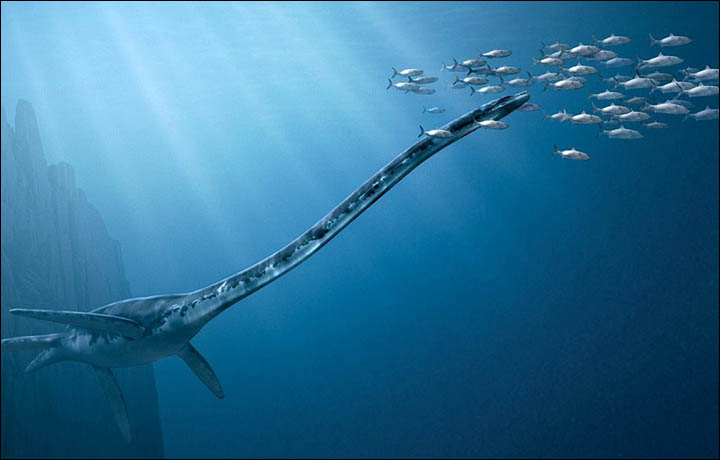
Neck bone of the 'T-Rex of the ocean' found on Wrangel Island. Picture: Animal reader
When Andrey Tyuryakov scanned the ground for signs of mushrooms, little did he know he might stumble across something far more important than his beloved fungus. Indeed the scientist may well have accidentally unearthed one of Russia’s most important dinosaur finds.
For under his feet as he walked along the shore of Wrangel Island, in the Siberian Sea, was an unusual shape that, at first, looked like a large stone.
But this was no ordinary boulder and instead has turned out to be a 200million-year-old bone belonging to one of the largest dinosaurs that ever existed.
'I almost stepped on it', said Tyuryakov, from the Arctic and Antarctic Research Institute, in St Petersburg. 'It was just in front of my eyes, a totally unusual shape.
'I’m actually a huge fan of mushrooms. Even when I get 10 metres from my home I’m still looking down at my feet, and it was the same that day.
'We were on the way back to our camp when I saw the stone. It was big in size and I decided to stop by and look at it a bit closer'.
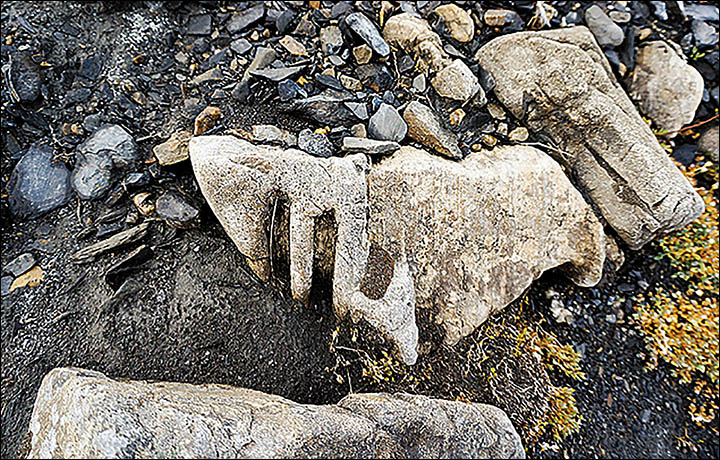
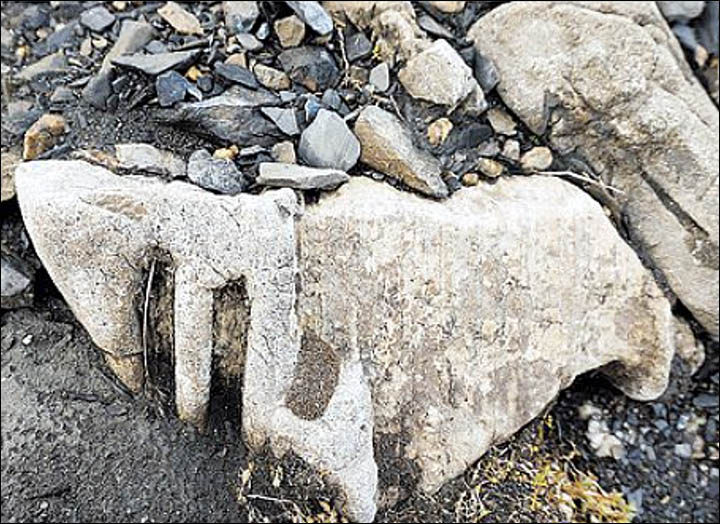
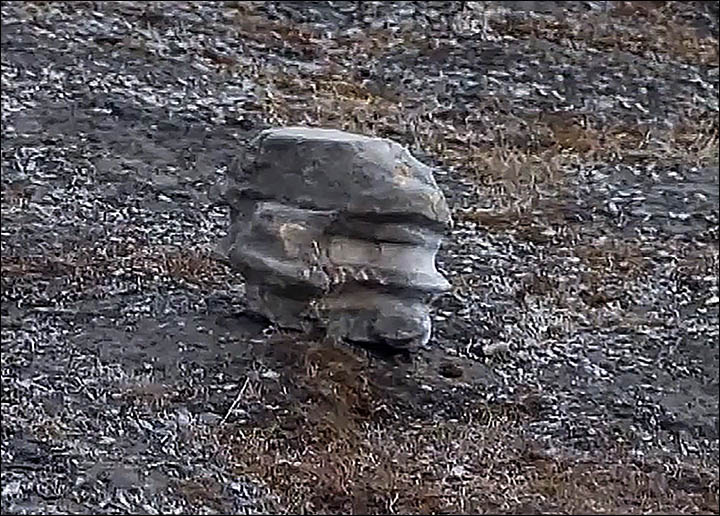
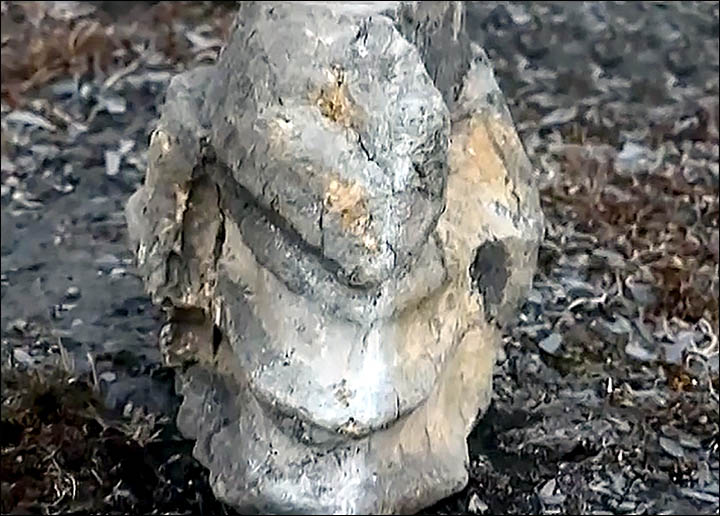
'This is the first discovery of fossil remains on Wrangel Island'. Pictures: Andrey Turyakov
Tyuryakov was part of a group of four scientists sent to Wrangel Island, in the Russian Far East, to take part in a complex expedition for a large energy company.
They were there to spend seven days on the remote outpost studying a polar bear population, and were assisted by members of staff from the nature reserve, including the director Aleksandr Gruzdev. It was at the end of the expedition that he stumbled across the ‘stone’, and when he asked his colleagues if they thought it was of interest they said it looked ordinary.
They believed it had taken its odd shape and markings as a result of being pounded for years by waves and wind. However, the scientist’s instincts told him it was much more than just a boulder so he took it with him back St Petersburg, before it was examined by experts at the city’s Zoological Museum.
Preliminary tests stunned the researchers, who found the stone was actually likely to be two fossilised bones from a plesiosaurus, a dinosaur reptile often described as giant sea monster. They were among the most feared creatures that roamed the oceans 200 million years ago, with its body longer than a humpback whale and teeth the size of cucumbers.
Thought to have had extremely long necks but small heads, and equipped with large flippers, they were the top marine predators during the Jurassic period.
Some experts have even described them as the 'T-Rex of the ocean' since they tended to feed on other marine reptiles.
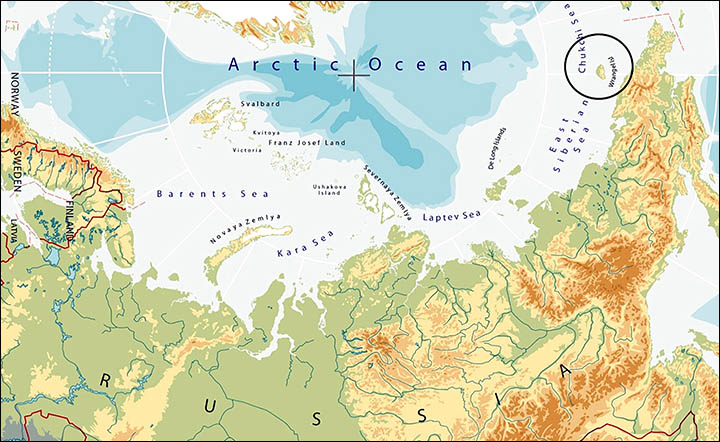
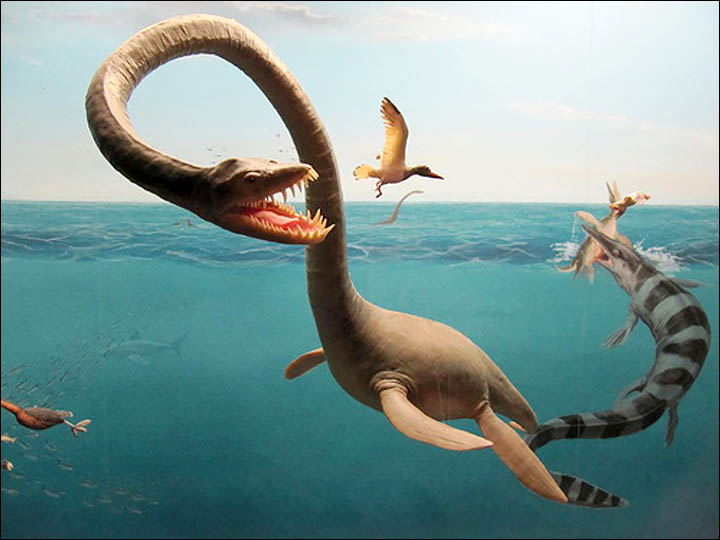
A number of expeditions to find further plesiosaur remains are planned for 2015. Pictures: Animal readerl
Tyuryakov said: 'It’s a monster with a massive neck – a little head but a very long neck, perhaps 15 metres in length alone. Its body is disproportionally large. My discovery was invaluable, not just something that is stone, with two fossilised plesiosaur vertebrae.
'This is the first discovery of fossil remains on Wrangel Island, and I’m proud. I’m just happy that I found her, having been on the island for a week.'
He added: 'Nobody has ever found anything like this. It’s cool, and I am the first!'
Plesiosaurs were thought to be common in the Arctic seas, with another vertebrae found by Soviet scientists on Uyedineniya Island, in the Kara Sea, during an expedition in the 1930s.
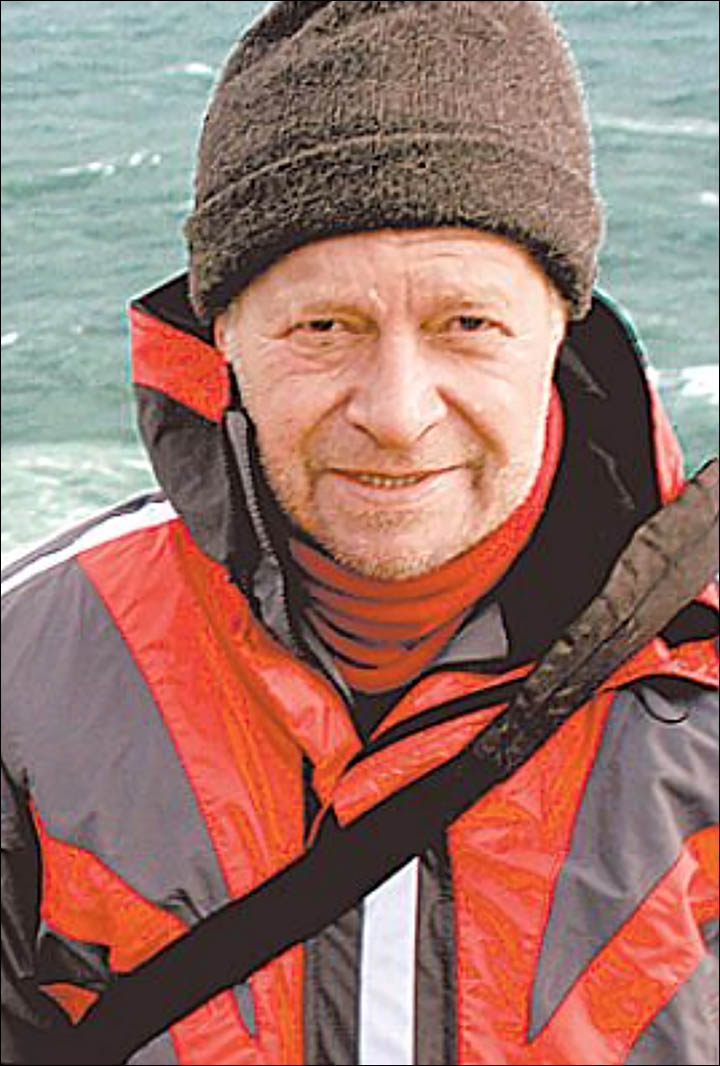
Andrey Tyuryakov, from the Arctic and Antarctic Research Institute, St Petersburg. Picture: Andrey Turyakov
Lying 88 miles off the coast of north-eastern Siberia, and also close to the US state of Alaska, Wrangel Island is a UNESCO World Heritage Site.
It is a federally-protected nature sanctuary, administered by Russian’s Ministry of Natural Resources and the Environment, and was classified a “zapovednik” – meaning a strict nature reserve – in 1976.
This gives the 2,900 sq mile island the highest level of protection and excludes practically all human activity other than for scientific purposes. It is believed to have been the final place on Earth to have supported woolly mammoths, with a small isolated population existing until about 2,000BC.
Further tests will be carried out on the fossilised remains in St Petersburg.
A number of paleontological expeditions to the Arctic region to find further plesiosaur remains are planned for 2015
No comments:
Post a Comment